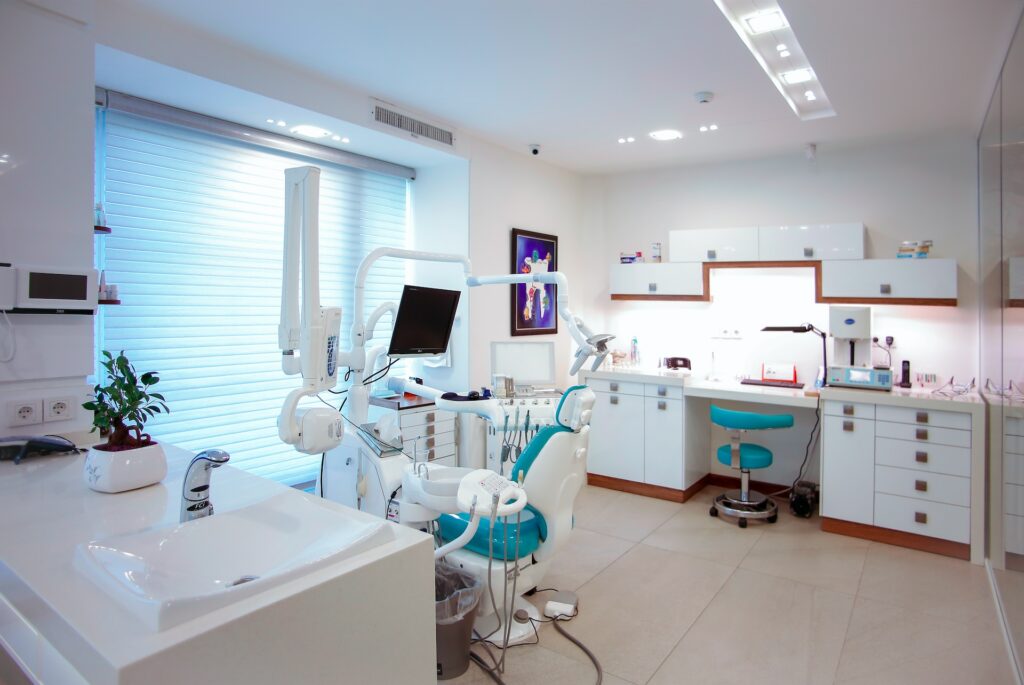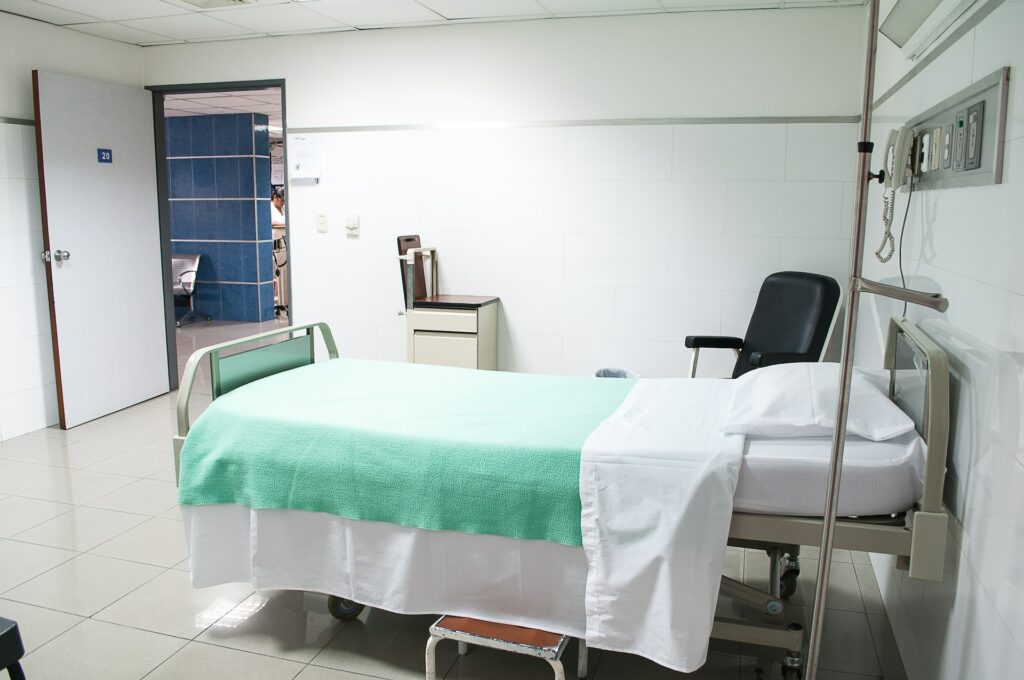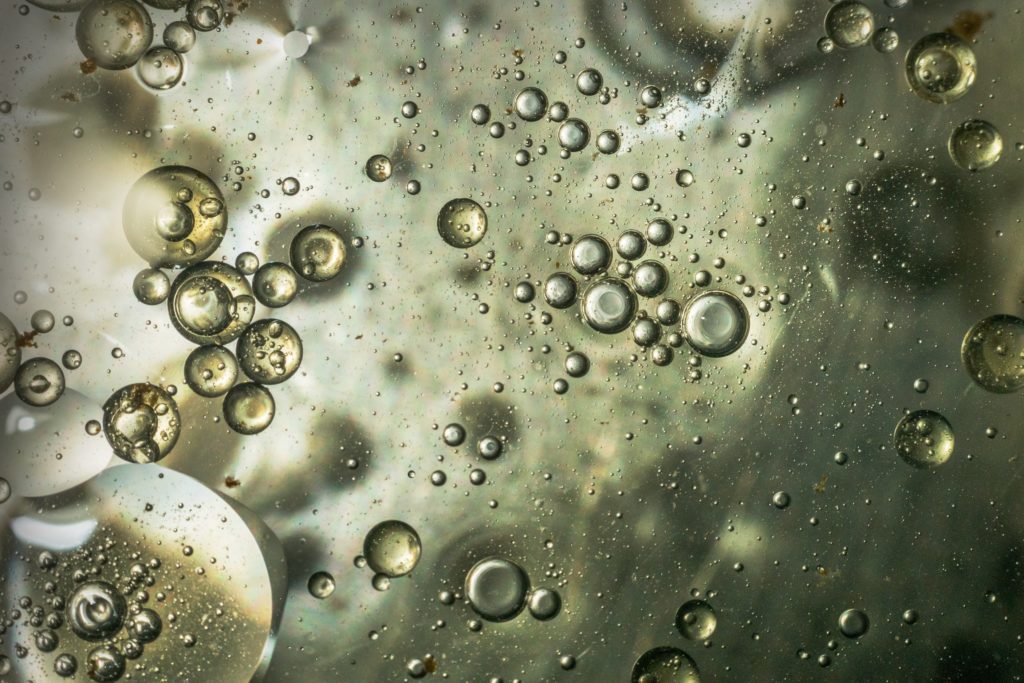01/29/2024 | Wastewater Chlorination | 14 MINUTE READ
Navigating Water Safety in Hospitals through Brine Monitoring for Chlorine Disinfection

Water disinfection is critical to maintaining a safe and healthy environment within hospital facilities. As guardians of public health, hospitals rely on robust disinfection processes to ensure that water used for various purposes, from patient care to facility maintenance, meets stringent safety standards. One key element in this disinfection journey is chlorine as a powerful disinfectant, with brine playing a pivotal role in its generation.
Chlorine, a well-known and widely used disinfectant, has proven efficacy in eliminating harmful pathogens from water sources. Hospitals leverage chlorine for its ability to combat bacteria, viruses, and other microorganisms that may pose a threat to patient well-being. Brine, a salt solution in water, becomes a crucial precursor in chlorine production for water disinfection.
This article delves into the intricate process of monitoring brine for chlorine-source water disinfection in hospitals. Understanding the dynamics of brine and its relationship with chlorine is paramount to ensuring water safety within healthcare facilities. This exploration encompasses the monitoring process, available technologies, and the ever-evolving regulatory compliance landscape. Join us on this informative journey as we underscore the significance of vigilant brine monitoring in safeguarding patients’ and healthcare professionals’ health and well-being.

Chlorine Source Water Disinfection in Hospitals
Chlorine is a stalwart guardian in the fight against waterborne pathogens in hospital settings. This powerful disinfectant plays a pivotal role in eradicating bacteria, viruses, and other microorganisms that could compromise the health of patients and the overall integrity of healthcare facilities.
- Chlorine as a Disinfectant: Chlorine, in various forms such as hypochlorite or chlorine gas, has been a go-to disinfectant due to its broad-spectrum effectiveness. Its ability to destroy pathogenic organisms makes it a cornerstone in the arsenal against waterborne diseases.
- Role of Brine in Chlorine Generation: Brine, a salt (sodium chloride) solution in water, serves as a crucial precursor in chlorine production within hospitals. Electrolysis of brine generates chlorine gas, which can then be dissolved in water to form hypochlorite solutions for disinfection.
- Significance of Chlorine in Ensuring Water Safety: The application of chlorine in water treatment goes beyond routine disinfection; it acts as a barrier against waterborne infections that could pose severe risks to vulnerable hospital populations. Whether used in water supply systems or for sterilizing medical equipment, chlorine plays a multifaceted role in maintaining water safety.
Understanding the dynamic interplay between chlorine and brine is fundamental to comprehend the intricacies of water disinfection processes in hospitals. As we navigate through the subsequent sections, we will focus on monitoring brine—a critical component in the chlorine generation process—to ensure optimal levels for effective water disinfection.
The Monitoring Process
Effective monitoring of brine for chlorine source water disinfection is a cornerstone in maintaining optimal water safety standards within hospital environments. This meticulous process involves routine checks and assessments to ensure that the levels of brine and chlorine align with prescribed parameters. Here’s an in-depth look at the monitoring process:
- Overview of Monitoring Brine for Chlorine Levels: Monitoring brine involves a systematic examination of the concentration of salt in water, with a keen focus on ensuring the right balance for chlorine production. Regular assessments of brine quality are crucial to guarantee the efficacy of subsequent disinfection processes.
- Importance of Regular Monitoring in Healthcare Facilities: Hospitals, as high-risk environments, necessitate consistent and vigilant monitoring of brine levels. Regular checks help identify deviations from the desired concentration, allowing for prompt corrective measures. This proactive approach is indispensable in preventing potential lapses in water disinfection.
- Key Parameters to Measure in the Monitoring Process: Monitoring goes beyond a simple salt concentration check. Key parameters include pH levels, temperature, and electrochemical environment during electrolysis. These factors collectively influence the efficiency of chlorine generation and, consequently, water disinfection.
Implementing a robust monitoring process involves a combination of automated sensors, manual checks, and periodic laboratory analyses. Automated systems can provide real-time data, enabling swift responses to deviations from established norms. Manual checks and laboratory analyses serve as complementary measures, ensuring the accuracy and reliability of the monitoring results.
In the next section, we’ll delve into the technologies available for monitoring brine in hospitals. We will explore the diverse tools and methodologies that healthcare facilities can leverage to uphold the highest water safety standards.

Technologies for Brine Monitoring
Advancements in technology have paved the way for a diverse range of tools and methodologies to monitor brine effectively for chlorine-source water disinfection in hospital settings. These technologies offer precision, efficiency, and real-time insights, enhancing the overall reliability of water disinfection processes. Here’s an exploration of the technologies available for brine monitoring:
Automated Sensor Systems
Ion-Selective Electrodes (ISEs): These sensors selectively measure ion concentrations, particularly chloride ions in brine. ISEs play a crucial role by providing real-time data and are frequently integrated into automated monitoring systems.
Conductivity Sensors: Monitoring changes in electrical conductivity is an efficient method to indicate variations in brine concentration. These sensors are well-suited for continuous monitoring setups, offering a responsive approach to changes in brine composition.
Spectrophotometry
UV-Visible Spectrophotometers: Operating on the principles of spectrophotometry, these devices gauge the absorption of light by the brine solution. Observable changes in absorption serve as indicators for alterations in salt concentration, providing valuable insights into the composition of brine.
Titration Techniques
Potentiometric Titration: This technique involves adding a titrant to the brine solution while monitoring potential changes. The endpoint is reached when all chloride ions react, offering a precise measure of chloride concentration through a meticulous titration process.
Online Analyzers
Continuous Brine Analyzers: These analyzers monitor various brine parameters, including salt concentration. Engineered for seamless integration into water treatment systems, they provide instantaneous feedback, contributing to a more responsive and automated monitoring approach.
Lab-Based Methods
Gravimetric Analysis: This method entails measuring the mass change of a sample after specific reactions. While it may be more time-consuming, gravimetric analysis stands out for its high accuracy and is a valuable periodic validation method for brine monitoring.
Smart Monitoring Platforms
Internet of Things (IoT) Devices: Connected sensors and devices play a pivotal role by transmitting data to centralized platforms. This connectivity enables remote monitoring and facilitates prompt intervention in case of deviations, showcasing the potential of intelligent monitoring in ensuring the integrity of brine monitoring systems.
Each technology has advantages and is suited to specific contexts within hospital water disinfection processes. The choice of monitoring technology depends on factors such as the facility’s scale, the desired level of automation, and budget considerations. Integrating these technologies ensures compliance with water safety standards and enhances the overall efficiency of hospital water management systems.
Regulatory Compliance
In hospital water disinfection, adherence to stringent regulatory standards is paramount to ensuring the safety and well-being of patients, staff, and visitors. Various regulatory bodies establish guidelines that healthcare facilities must follow to maintain water quality. Here, we explore the landscape of regulatory compliance related to brine monitoring for chlorine source water disinfection in hospitals:
Healthcare facilities are subject to stringent regulations set by various authorities in the realm of water disinfection. Regulatory bodies, including health departments and quality assurance agencies, play a pivotal role in establishing standards for water quality within healthcare settings. These standards encompass a spectrum of parameters, explicitly focusing on chlorine levels to ensure the efficacy of disinfection processes.
Regulatory standards are intricately designed to safeguard patients from potential waterborne infections. The meticulous monitoring of brine, in adherence to these standards, becomes integral to sustaining a water supply that poses no threat to vulnerable individuals, especially those with compromised immune systems.
Compliance with regulatory standards is not merely a formality but a fundamental requirement for the operational continuity of healthcare facilities. Hospitals must adhere to these standards to avoid penalties, legal consequences, and potential reputational damage.
Failure to meet regulatory standards exposes healthcare facilities to legal ramifications. This may entail legal actions, financial penalties, or, in severe cases, temporary closure of facilities. Hospital administrators are responsible for diligently implementing and maintaining effective brine monitoring processes to mitigate such legal consequences.
Non-compliance goes beyond legal repercussions; it significantly influences public perception. A hospital’s reputation is intricately linked to its commitment to adhering to established standards. Any deviation from these standards can adversely affect public trust and result in long-lasting consequences for the institution. As such, the importance of brine monitoring extends beyond regulatory compliance to the broader realm of public confidence and institutional credibility.
Hospital administrators must stay abreast of updates and amendments as the regulatory landscape evolves to ensure continuous compliance. Implementing robust brine monitoring practices fulfills regulatory requirements and contributes to the broader goal of providing a safe and secure healthcare environment.
The subsequent section will delve into best practices for hospitals in monitoring brine for chlorine source water disinfection. These practices aim to guide healthcare facilities in establishing effective monitoring protocols and fostering a proactive water safety management culture.

Best Practices
Establishing effective brine monitoring practices is fundamental for hospitals that maintain water safety and comply with regulatory standards. These best practices encompass a range of strategies, from routine monitoring schedules to staff training, ensuring a comprehensive approach to brine monitoring for chlorine source water disinfection:
Routine Monitoring Schedule
The implementation of a routine schedule for monitoring brine levels is essential. Regular checks, whether on a daily or weekly basis, play a pivotal role in promptly identifying deviations and enabling timely implementation of corrective actions to maintain optimal brine composition.
In conjunction with automated sensors, periodic laboratory analyses offer a more comprehensive understanding of brine composition. These detailed assessments, conducted by laboratories, validate the accuracy of continuous monitoring systems and contribute to a thorough evaluation of brine quality.
Training Staff on Proper Monitoring Procedures
Ensuring that personnel responsible for water management undergo comprehensive training is imperative. Training should cover all aspects of brine monitoring procedures, including the significance of monitoring, interpretation of results, and appropriate responses to deviations.
Developing clear protocols for responding to unexpected changes in brine levels is crucial. Staff members should be familiar with the steps to take in an emergency, minimizing downtime and potential risks associated with fluctuations in brine concentration.
Utilizing Advanced Technologies
Investment in automated brine monitoring systems that provide real-time data is critical. Automation minimizes the risk of human error and allows for swift responses to fluctuations in brine concentration, ensuring a proactive approach to water safety.
Ensuring seamless integration of brine monitoring technologies with overall water treatment systems is a holistic approach that enhances the efficiency of water disinfection processes. This integration optimizes the overall performance of the water management system.
Documentation and Record-Keeping
Maintaining detailed records of brine monitoring results, including dates, times, and any corrective actions taken, is fundamental. Thorough documentation is valuable for audits, regulatory compliance, and continuous improvement initiatives.
Conducting regular internal audits to review monitoring processes is an essential practice. Audits identify areas for improvement, ensuring that the brine monitoring system evolves in line with best practices and industry advancements.
Continuous Improvement
Staying abreast of industry trends, technological advancements, and updates to regulatory standards is a proactive approach. This continuous awareness allows hospitals to adapt their brine monitoring practices to emerging challenges in the dynamic water management landscape.
Establishing feedback mechanisms for staff involved in brine monitoring fosters a culture of continuous improvement within the water management framework. Encouraging the reporting of observations and suggestions enhances the responsiveness and effectiveness of the brine monitoring system over time.
Hospitals can fortify their brine monitoring processes by incorporating these best practices, mitigating risks, and upholding the highest water safety standards. The commitment to effective monitoring ensures compliance with regulations and contributes to the overarching goal of providing a secure and healthy environment for patients and healthcare professionals.

Future Outlook
The landscape of brine monitoring for chlorine source water disinfection in hospitals is poised for transformative advancements, driven by evolving technology, regulatory considerations, and a heightened focus on water safety. As we peer into the future, several key trends and possibilities emerge:
- Advancements in Brine Monitoring Technology
- Sensor Innovations: Continuous improvements in sensor technologies are anticipated, offering higher precision, sensitivity, and real-time monitoring capabilities. These enhanced sensors will significantly contribute to the accuracy of brine monitoring processes, ensuring a more reliable water quality assessment.
- Integration with Smart Infrastructure: Integrating brine monitoring systems with broader smart infrastructure and leveraging the Internet of Things (IoT) holds promise for interconnected and automated water management solutions. This interconnectedness facilitates proactive and efficient responses to fluctuations in brine levels, enhancing the overall resilience of water treatment processes.
- Data Analytics and Artificial Intelligence (AI)
- Predictive Analytics: The potential of AI-powered predictive analytics is significant. Forecasting variations in brine levels based on historical data enables hospitals to take preventive measures, mitigating potential issues before they arise.
- Data-driven Insights: Advanced analytics tools will give hospitals deeper insights into their water disinfection processes. This allows for continuous optimization and identifying patterns that may have been challenging to discern with traditional methods.
- Focus on Sustainability
- Green Technologies: A shift toward more sustainable brine generation methods is anticipated, aligning with broader environmental considerations. Hospitals may explore eco-friendly alternatives that reduce the environmental impact of chlorine production, reflecting a commitment to sustainable water management practices.
- Resource Efficiency: Efforts to optimize resource usage, including salt and energy, will become integral to future brine monitoring practices. Sustainability initiatives will drive the development of more efficient and eco-conscious technologies, promoting responsible resource management.
- Stricter Regulatory Standards
- Evolution of Guidelines: Regulatory bodies are likely to evolve standards, necessitating hospitals to continually adapt their brine monitoring processes. A heightened emphasis on water safety and quality may lead to more rigorous compliance requirements, challenging healthcare facilities to meet evolving regulatory expectations.
- Global Harmonization: Efforts toward global harmonization of water safety standards may influence the development of unified guidelines, streamlining compliance for healthcare facilities operating in different regions. This push for harmonization aims to create a standardized approach to water safety, irrespective of geographical location.
- Community Engagement and Transparency
- Public Awareness: Increasing public awareness of water safety issues may prompt hospitals to engage more actively with their communities. Transparent communication about water management practices, including brine monitoring, will become a focal point, fostering trust and understanding between healthcare institutions and the communities they serve.
- Community Feedback: Hospitals may incorporate community feedback into their water safety initiatives, fostering a collaborative approach to ensuring the well-being of the broader population. This emphasis on community involvement strengthens the collective commitment to water safety and reflects a proactive stance in addressing public concerns.
Hospitals must remain agile, embrace technological innovations, and stay attuned to emerging regulatory frameworks in navigating this future landscape. The commitment to water safety and a proactive approach to brine monitoring will position healthcare facilities at the forefront of creating secure and sustainable environments for patients and staff alike.
Conclusion
As we conclude our exploration into the realm of monitoring brine for chlorine source water disinfection in hospitals, it becomes evident that the significance of this process extends far beyond mere regulatory compliance. Ensuring water safety within healthcare facilities is a multifaceted endeavor that demands a harmonious integration of technology, regulatory adherence, and a commitment to continuous improvement.
The journey from understanding chlorine as a potent disinfectant to meticulously monitoring brine levels unveils a critical aspect of healthcare infrastructure. Hospitals are guardians of public health, and their responsibility to provide a safe and secure environment necessitates unwavering attention to water disinfection processes.
The technologies we’ve examined, from advanced sensors to AI-driven analytics, paint a picture of a future where brine monitoring becomes not just a reactive measure but a predictive and sustainable practice. The evolving landscape calls for hospitals to embrace innovation, uphold sustainability, and actively engage with their communities in water safety matters.
Regulatory compliance remains a cornerstone, with standards expected to evolve with technological advancements. Hospitals must not only meet current guidelines but also prepare for more stringent requirements in the future. By doing so, they fulfill regulatory obligations and contribute to the broader mission of public health and safety.
In adopting the best practices outlined—establishing routine monitoring schedules, investing in staff education, utilizing advanced technologies, maintaining comprehensive records, and fostering a culture of continuous improvement—hospitals can fortify their defenses against waterborne threats.
As we look ahead, the commitment to water safety remains a shared responsibility. The journey doesn’t end with compliance; it extends to a future where hospitals, communities, and regulatory bodies collaborate seamlessly to create environments where water is not just a resource but a testament to the unwavering dedication to the health and well-being of all.
Posted by Joshua Samp on January 29, 2024
Sensorex is a global leader in the design and manufacture of quality sensors for water quality and process applications. The company offers more than 2000 sensor packages for pH, ORP, conductivity, dissolved oxygen, free chlorine, chlorine dioxide, UV transmittance and other specialty measurements, as well as a full line of sensor accessories and transmitters. Its expert technical support engineers solve analytical sensor challenges with custom designs and off the shelf products.




